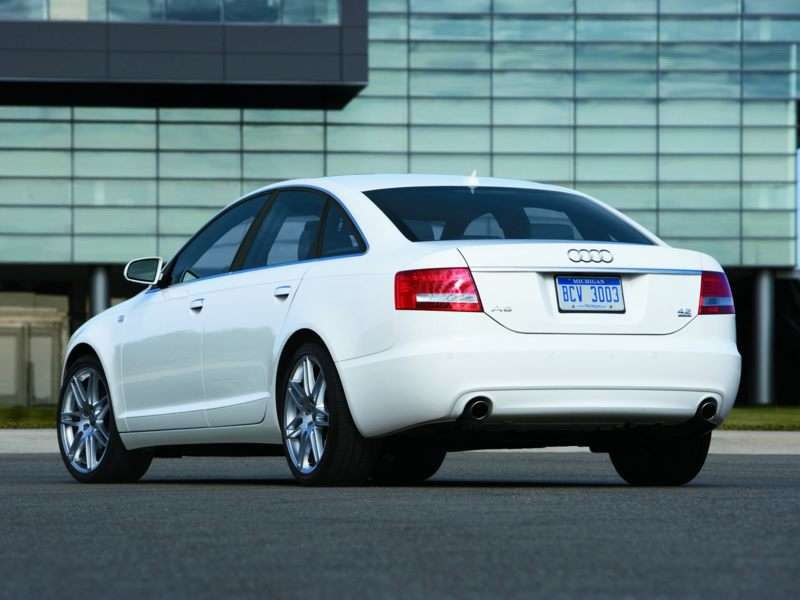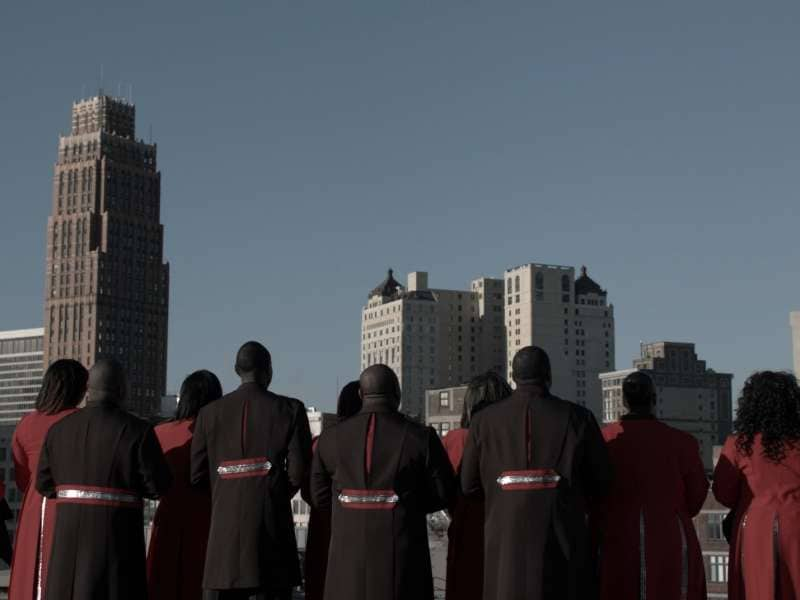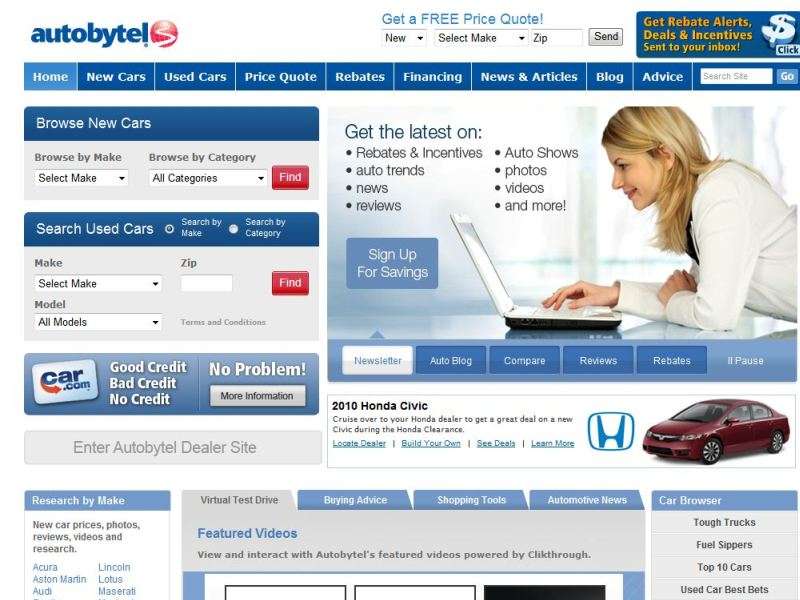Recent Articles
Popular Makes
Body Types
The 10 Best Super Bowl Car Commercials Before 2014

Whenever you start a discussion of the 10 best Super Bowl car commercials, it’s important to realize everyone knows one of the best aspects of the Super Bowl; wait, are we even allowed to say “Super Bowl” anymore, or do we have to refer to it as “The Big Game”?
OK, well, just to be on the safe side, throughout the rest of this post, where you see “The Big Game”, just think “S*p*r B*wl”.
Everybody’s so touchy with copyright issues these days.
But we digress.
By now, everyone knows one of the best aspects of watching “The Big Game” isn’t really the game itself, but rather the creative little short films high-priced advertising agencies work on all year long to fill that multi-million dollar slot of time purchased to tell the story of some product or service.
This year, at $4 million for a 30-second spot, that price is higher than it has ever been.
While the number in question is big enough to make some veteran big game advertisers stay on the bench this year, a number of car companies have their slots bought and their spots wrought. The 2014 big game will feature ads from Audi, Chevrolet, Hyundai, Jaguar, Kia, Toyota, and Volkswagen. And with the stakes this huge, you can bet we’ll see some very innovative storytelling. After all, the goal here is to build brand awareness, and make sure you remember the name of the company that had the hip hamsters hanging smooth from its whip.
This close to game time, you can be sure all those spots are shot, reviewed and approved, however you can also bet their creators reviewed some or all of the spots on this list at some point in their careers, because these are ten examples of big game car commercials done right.
Standing the test of time, and still considered some of the best advertising messaging ever produced, here’s Autobytel’s list of the 10 Best Super Bowl Car Commercials.
The 10 Best Super Bowl Car Commercials: Audi R8 “Godfather” (2008)
Going hard after the established luxury carmakers, Audi had introduced its R8 exotic sports car two years prior to the airing of this spot. This is one of a series of commercials in which Audi makes the point its competitors are old school, while its models reflect the new rules. However, for this commercial, the company’s agency dug back into cinematic history and referenced one of the most iconic film series of the 20th century, The Godfather. However, rather than waking up to find the head of his beloved racehorse sharing his bed, it was another of the venerable Hollywood producer’s thoroughbreds at the foot of his bed. Score one for Audi—the point was made. And, we’re pretty sure the producer didn’t refuse Audi’s next offer.

The 10 Best Super Bowl Car Commercials: Audi A6 “Through The Decades” (2009)
Digging once again into the annals of cinematic references—this time for its Audi A6 Supercharged model—the manufacturer’s agency took advantage of Jason Statham’s association with the marque in popular culture. The brand of choice by “Frank Martin”, the character Statham portrays in his second Transporter film, Audi was well represented in that picture. Quite naturally, when Statham is seen behind the wheel of an Audi once again, the brand looks hip, with it, now. This continues to press home the message Audi has been riding for several years now—the more established luxury brands represent the past, while Audi is rooted thoroughly in the present and looking toward the future. The beauty of this spot is it does exactly that, while also conveying the exciting performance potential of the supercharged Audi A6 model and simultaneously staking its claim on the glamour associated with the movies.

The 10 Best Super Bowl Car Commercials: Chevrolet Camaro “Happy Grad” (2012)
Who among us wouldn’t lose their mind if their parents presented them with a brand new convertible GT car for a graduation gift? Exciting, comical, and highly memorable, this spot captures the exuberance of youth, telegraphs the excitement of driving a convertible Camaro, and simultaneously conveys the energy the Chevrolet folks want you to associate with their products. This spot was actually produced by an individual rather than an ad agency, as part of the Chevrolet “Route 66” contest the company sponsored to see who could come up with the best ad for one of its models. Long Island, New York native Zach Borst, then 26 years old, produced the spot in four hours in Floral Park, New York. When asked how he came up with it, Borst described the ad’s inspiration this way: “My Dad was a cop and worked real hard to buy his kids their first cars. They were used, but mine meant the world to me. Then I wondered: What would it look like if I got a brand new Camaro? I mean, after all, who wouldn’t want a Camaro as a graduation gift?” General Motors paid Borst $25,000 for producing the spot.

The 10 Best Super Bowl Car Commercials: Chrysler “Eminem – Imported From Detroit” (2011)
Produced just as America’s car companies were finally beginning to emerge from a long, dark winter of depressed sales and bankruptcies, and as most Americans were also starting to come out from the shadow of the financial calamities of the first decade of the 21st century, Chrysler’s image building “Imported from Detroit” piece fueled a long smoldering conversation, one that apparently really needed to be had. At the time, all sorts of people were saying the car companies should be allowed to fail, and Detroit’s reputation as a model of urban decay was becoming more and more cemented in the minds of the average American. With this spot, Chrysler reminded Americans of the glory and power Detroit once wielded and intimated the city is on the cusp of wielding it once again. Further, it reminded them of the legacy of the Detroit manufacturers and similarly indicated they were on the rise once again. Just one problem with the ad though, it featured Chrysler’s most lackluster product; the 2011 Chrysler 200. A sadder amalgam of mismatched design cues had seldom been unleashed upon the world by the motor city. Tellingly, at no point in the spot are you allowed to see the car in full. Yeah, there was definitely a reason for that.

The 10 Best Super Bowl Car Commercials: Chrysler “It’s Halftime America” (2013)
Following Eminem’s “Imported From Detroit” piece with an American icon the likes of Clint Eastwood (who poetically rose to fame in Westerns made by Italian film director Sergio Leone) was a masterful stroke. At the time the spot was produced, Chrysler had just become an Italian-owned company. With this spot, an Italian-owned American car company was using an American actor whose career was made by an Italian as a spokesperson. It was brilliant! The short film was also produced just as America’s car companies were finally beginning to see some light at the end of a very long and dark tunnel; and just as most Americans were beginning to do the same after surviving the effects of the financial crisis that had dogged the country for many years. Showing Eastwood walking through a tunnel, and intercutting footage of "ordinary Americans", at first despairing, then in solidarity with one another, and finally hopeful for their futures, perfectly captured the mood of the era. Aired during the halftime break of the big game, the spot was appropriately titled and further, that title served as a metaphor for the sense of hope it conveyed. As an image building piece, it worked beautifully for Chrysler. However, it also drew fire from some people who were opposed to the bailouts of the automotive industry and what they represented.

The 10 Best Super Bowl Car Commercials: Ford GT “The One” (2004)
When Ford introduced the GT, it was the first time the company had ever produced a true exotic sports car. Yes, the Mustang has had some very powerful iterations and there are many iconic models out there brandishing the galloping pony, but the GT was the first time Ford had produced a street car capable of going head to head with the super sports cars of the world—for the street anyway. The Ford GT owed its heritage to the LeMans-winning prototype racing machines that finished 1-2-3 in the 24 Hours of LeMans race of 1966. What’s more, the GT40 went on to win the prestigious event three more times—in 1967, 1968, and 1969. The GT was intended to remind enthusiasts of Ford’s potential prowess. In reflection of this, the renowned automotive photographer Jeff Zwart (the director of the spot) put racer Rod Millen in the Ford GT, turned him loose on the track at Thunderhill raceway in California, and let him drive the living crap out of the car. He then proceeded to shoot from every angle he could think of, cut it all together, and produced one of the most “moving” Super Bowl commercials ever produced—literally.

The 10 Best Super Bowl Car Commercials: Jeep “Snow Covered ” (1995)
One of the basic rules of producing a car commercial is making sure the audience sees the car. Infiniti learned this the hard way when it debuted with those “image” spots that failed to show the Q45. However, if you know the rules, then you also know how to break the rules to the best effect. In the case of this spot for Jeep, you never see a Jeep at all. Here, it didn’t matter which Jeep product was the subject of the spot. The message came through loud and clear. Any Jeep will take you anywhere you could possibly want to go. Even if you’re driving in snow so deep you can’t see the car, it won’t stay its progress. As an image piece for Jeep, the spot was absolutely brilliant.

The 10 Best Super Bowl Car Commercials: Nissan Maxima “Pigeons” (1997)
Even though the film Top Gun had been released some 13 years before, “Maverick”, “Goose”, and the whole fighter pilot pathos accompanying them was still a touchstone of relevance for Super Bowl audiences. Further, portraying a flock of pigeons on a bombing run after a freshly washed Nissan Maxima as a military-style mission, tapped into the concern every car lover has that as soon as their car is washed, it’ll either rain, or some bird is going to come after you with white bombs. This spot came during a particularly fertile period of advertising for Nissan, when they were running some of the most innovative commercials on television, thanks to the creative minds at the TBWA Chiat/Day advertising agency. Holding the Maxima out as being so fast and so agile it could outrun a flock of birds bent on its destruction, told audiences the four-door sports car could, and would, deliver an exciting driving experience.

The 10 Best Super Bowl Car Commercials: Nissan 300ZX “Toys” (1995)
Who says a red-hot sports car won’t get you a red-hot date? The 1995 Nissan 300ZX pulled “Barbie” for G.I. Joe, and everybody knows Barbie already has everything she could possibly want. Rob Siltanen, a TBWA Chiat/Day creative director and copywriter at the time, got the seed of the idea from playing with a remote control toy car. Then he got the thought of incorporating live-action figures, and the rest is one of the most entertaining car commercials ever produced. Coming on the heels of the first Toy Story movie, the public’s imagination was already fired by the idea of toys they thought they knew so very well behaving like real human beings. Seeing Barbie throw Ken over for G.I. Joe was absolutely hilarious. After all, everybody knows, if it came down to it, G.I. Joe would kick Ken’s preppie butt—no problem.

The 10 Best Super Bowl Car Commercials: Autobytel.com “Pajamas” (1998)
Wrapping it up, we here at Autobytel are no strangers to the big game ourselves. Back in 1998, when we ran this Super Bowl spot, buying a car over the Internet was the stuff of science fiction. So while viewing the spot today it may come across as a bit lame—back them this was cutting edge stuff. All you have to do is look at the cat’s reaction to the woman entering her computer to make her purchase to get an idea just how big a deal it was. So of course, any Autobytel list of the 10 best Super Bowl car commercials has to include this one.
